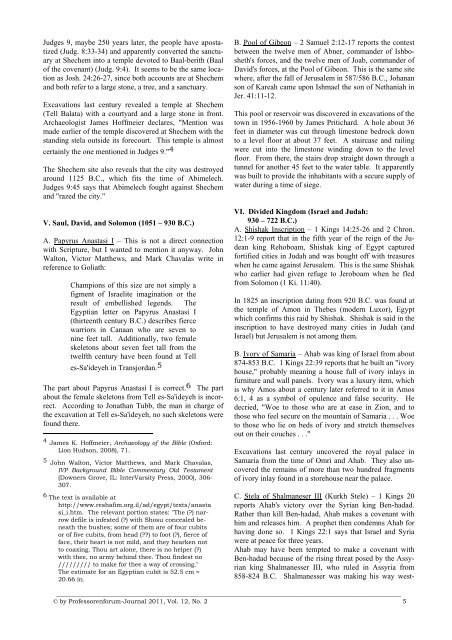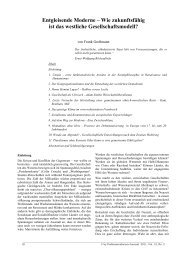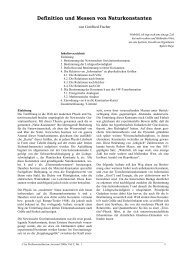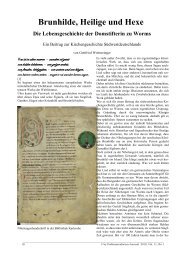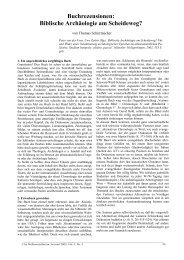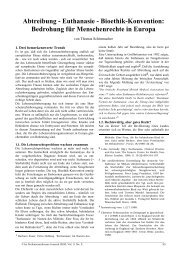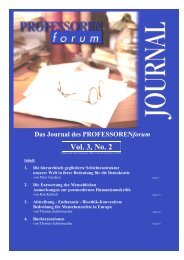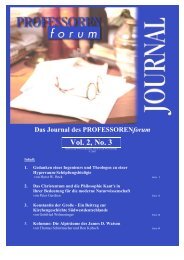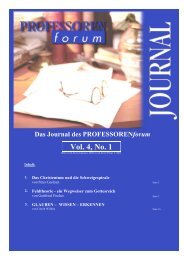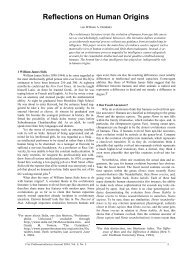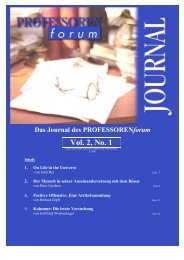Das Journal des PROFESSORENforum Vol. 12, No. 2
Das Journal des PROFESSORENforum Vol. 12, No. 2
Das Journal des PROFESSORENforum Vol. 12, No. 2
Sie wollen auch ein ePaper? Erhöhen Sie die Reichweite Ihrer Titel.
YUMPU macht aus Druck-PDFs automatisch weboptimierte ePaper, die Google liebt.
Judges 9, maybe 250 years later, the people have apostatized<br />
(Judg. 8:33-34) and apparently converted the sanctuary<br />
at Shechem into a temple devoted to Baal-berith (Baal<br />
of the covenant) (Judg. 9:4). It seems to be the same location<br />
as Josh. 24:26-27, since both accounts are at Shechem<br />
and both refer to a large stone, a tree, and a sanctuary.<br />
Excavations last century revealed a temple at Shechem<br />
(Tell Balata) with a courtyard and a large stone in front.<br />
Archaeologist James Hoffmeier declares, "Mention was<br />
made earlier of the temple discovered at Shechem with the<br />
standing stela outside its forecourt. This temple is almost<br />
certainly the one mentioned in Judges 9." 4<br />
The Shechem site also reveals that the city was <strong>des</strong>troyed<br />
around 1<strong>12</strong>5 B.C., which fits the time of Abimelech.<br />
Judges 9:45 says that Abimelech fought against Shechem<br />
and "razed the city."<br />
V. Saul, David, and Solomon (1051 – 930 B.C.)<br />
A. Papyrus Anastasi I – This is not a direct connection<br />
with Scripture, but I wanted to mention it anyway. John<br />
Walton, Victor Matthews, and Mark Chavalas write in<br />
reference to Goliath:<br />
Champions of this size are not simply a<br />
figment of Israelite imagination or the<br />
result of embellished legends. The<br />
Egyptian letter on Papyrus Anastasi I<br />
(thirteenth century B.C.) <strong>des</strong>cribes fierce<br />
warriors in Canaan who are seven to<br />
nine feet tall. Additionally, two female<br />
skeletons about seven feet tall from the<br />
twelfth century have been found at Tell<br />
es-Sa'ideyeh in Transjordan. 5<br />
The part about Papyrus Anastasi I is correct. 6 The part<br />
about the female skeletons from Tell es-Sa'ideyeh is incorrect.<br />
According to Jonathan Tubb, the man in charge of<br />
the excavation at Tell es-Sa'ideyeh, no such skeletons were<br />
found there.<br />
4 James K. Hoffmeier, Archaeology of the Bible (Oxford:<br />
Lion Hudson, 2008), 71.<br />
5 John Walton, Victor Matthews, and Mark Chavalas,<br />
IVP Background Bible Commentary Old Testament<br />
(Downers Grove, IL: InterVarsity Press, 2000), 306-<br />
307.<br />
6 The text is available at<br />
http://www.reshafim.org.il/ad/egypt/texts/anasta<br />
si_i.htm. The relevant portion states: "The (?) narrow<br />
defile is infested (?) with Shosu concealed beneath<br />
the bushes; some of them are of four cubits<br />
or of five cubits, from head (??) to foot (?), fierce of<br />
face, their heart is not mild, and they hearken not<br />
to coaxing. Thou art alone, there is no helper (?)<br />
with thee, no army behind thee. Thou fin<strong>des</strong>t no<br />
///////// to make for thee a way of crossing."<br />
The estimate for an Egyptian cubit is 52.5 cm =<br />
20.66 in.<br />
B. Pool of Gibeon – 2 Samuel 2:<strong>12</strong>-17 reports the contest<br />
between the twelve men of Abner, commander of Ishbosheth's<br />
forces, and the twelve men of Joab, commander of<br />
David's forces, at the Pool of Gibeon. This is the same site<br />
where, after the fall of Jerusalem in 587/586 B.C., Johanan<br />
son of Kareah came upon Ishmael the son of Nethaniah in<br />
Jer. 41:11-<strong>12</strong>.<br />
This pool or reservoir was discovered in excavations of the<br />
town in 1956-1960 by James Pritichard. A hole about 36<br />
feet in diameter was cut through limestone bedrock down<br />
to a level floor at about 37 feet. A staircase and railing<br />
were cut into the limestone winding down to the level<br />
floor. From there, the stairs drop straight down through a<br />
tunnel for another 45 feet to the water table. It apparently<br />
was built to provide the inhabitants with a secure supply of<br />
water during a time of siege.<br />
VI. Divided Kingdom (Israel and Judah:<br />
930 – 722 B.C.)<br />
A. Shishak Inscription – 1 Kings 14:25-26 and 2 Chron.<br />
<strong>12</strong>:1-9 report that in the fifth year of the reign of the Judean<br />
king Rehoboam, Shishak king of Egypt captured<br />
fortified cities in Judah and was bought off with treasures<br />
when he came against Jerusalem. This is the same Shishak<br />
who earlier had given refuge to Jeroboam when he fled<br />
from Solomon (1 Ki. 11:40).<br />
In 1825 an inscription dating from 920 B.C. was found at<br />
the temple of Amon in Thebes (modern Luxor), Egypt<br />
which confirms this raid by Shishak. Shishak is said in the<br />
inscription to have <strong>des</strong>troyed many cities in Judah (and<br />
Israel) but Jerusalem is not among them.<br />
B. Ivory of Samaria – Ahab was king of Israel from about<br />
874-853 B.C. 1 Kings 22:39 reports that he built an "ivory<br />
house," probably meaning a house full of ivory inlays in<br />
furniture and wall panels. Ivory was a luxury item, which<br />
is why Amos about a century later referred to it in Amos<br />
6:1, 4 as a symbol of opulence and false security. He<br />
decried, "Woe to those who are at ease in Zion, and to<br />
those who feel secure on the mountain of Samaria . . . Woe<br />
to those who lie on beds of ivory and stretch themselves<br />
out on their couches . . ."<br />
Excavations last century uncovered the royal palace in<br />
Samaria from the time of Omri and Ahab. They also uncovered<br />
the remains of more than two hundred fragments<br />
of ivory inlay found in a storehouse near the palace.<br />
C. Stela of Shalmaneser III (Kurkh Stele) – 1 Kings 20<br />
reports Ahab's victory over the Syrian king Ben-hadad.<br />
Rather than kill Ben-hadad, Ahab makes a covenant with<br />
him and releases him. A prophet then condemns Ahab for<br />
having done so. 1 Kings 22:1 says that Israel and Syria<br />
were at peace for three years.<br />
Ahab may have been tempted to make a covenant with<br />
Ben-hadad because of the rising threat posed by the Assyrian<br />
king Shalmanesser III, who ruled in Assyria from<br />
858-824 B.C. Shalmanesser was making his way west-<br />
_________________________________________________________________________________________________________________<br />
© by Professorenforum-<strong>Journal</strong> 2011, <strong>Vol</strong>. <strong>12</strong>, <strong>No</strong>. 2 5


